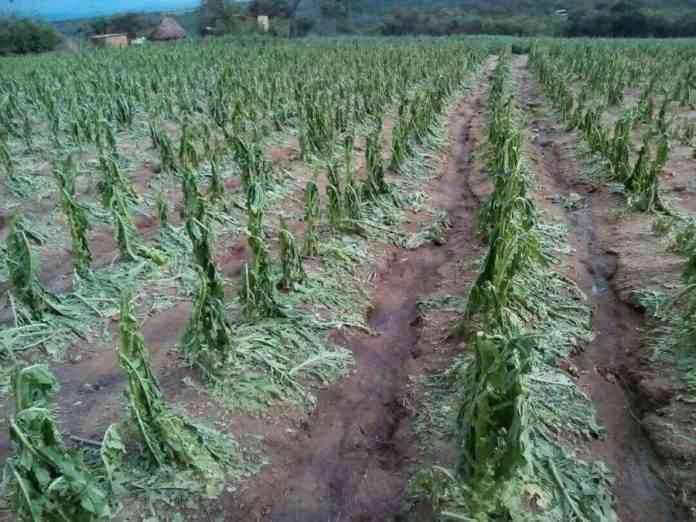
The global economic environment has indeed been impacted by several headwinds in the form of the Covid-19 pandemic, supply-chain disruptions, and the Russia/Ukraine crisis. The net effect has been significant increase in food prices.
Even before the invasion of Ukraine, price levels for wheat and corn, for example were 40 to 50% higher than the average price over the past decade. The crisis has also provoked numerous countries to try to protect their food access by curbing grain exports.
According to Mckinsey, the negative outlook could ultimately result in a deficit of roughly 15 million to 20 million metric tons of wheat and corn from the world’s supply of exported grain. The deficit in 2023 could reach roughly 23 million to 40 million metric tons, according to a worst-case scenario that assumes a prolonged crisis.
An important highlight is that the global food supply chain is increasingly interconnected, reliance on trade is high, and stocks are low and concentrated in a handful of countries.
Oil and fertilizer prices, logistics costs, and the number of trade restrictions in place are close to the highest they have been in the past decade, and the changing climate is having a negative impact on crops.
Many countries in Africa and Asia may be hit hard by these price increases. Potential steps to take include (i) sustainably transforming agriculture to boost yields, especially in importing countries with fast-growing populations, (ii) finding ways to reduce global food waste and optimize use of land for food and biomass production and (iii) accelerating the development and adoption of alternative meat and encourage the consumption of the most efficient proteins.
That said, a prominent trend in developing countries is domination by smallholder farmers in meeting food demands. This is because few economic opportunities- exist and this obliges most rural dwellers to engage in agriculture.
The smallholder farmer, however, appears to be less sophisticated and vulnerable to various risks in agricultural production including production and weather risks.
- Open letter to President Mnangagwa
- Feature: ‘It’s worse right now than under Mugabe’: Sikhala pays the price of opposition in solitary cell
- Masvingo turns down fire tender deal
- Human-wildlife conflict drive African wild dogs to extinction
Keep Reading
These risks are due to unforeseen weather, disease, pest infestations and market conditions causing wide variations in yields and commodity prices.
Production risk due to weather uncertainties and variabilities, particularly those associated with deficient rainfall remains pervasive. Weather shocks also pose a major challenge to increasing productivity among smallholder farmers in developing countries particularly so in the face of climate change. For example, Zimbabwe constitutes a region that is most prone to climate variability (floods, droughts, intense sunlight). T
here is need to set up sustainable risk management frameworks for farmers in Zimbabwe. Agricultural insurance has been identified to be a very important tool in assisting farmers, herders and governments lessen some negative financial impact of adverse natural events. However, wrong perceptions about agricultural insurance contributes to low insurance uptake. The following are comments from different farmers during a survey on insurance.
“Insurance is just a way of taking people’s money to be used by the privileged and educated in society. Educated people just use it as a way of enriching themselves. How many times do unexpected calamities happen in a year? We have engaged in farming for a long time without insurance and we are still surviving, why the need?”
“Even for me as an educated person, if I take the case of vehicle insurance, if it had not been the fact that it is mandatory, I will not have insured my vehicle, why pay for insurance when the likelihood of having an accident or calamity is very slim? There is no way I will insure my crops under cultivation”
The results of the survey clearly indicated that there is need for education on the benefits of insurance and risk management. Given the low levels of awareness around crop insurance in the country, farmers may be hesitant to buy insurance.
Through sensitization campaigns, players in the sector can explain how insurance works to build farmers’ confidence in the coverage. According to the latest IPEC publication, farming and hail insurance lines of business decreased in real terms.
The two lines of business contributed a meagre 2.9% of the total business generated by the industry in contrast to the agro-based structure of the Zimbabwean economy. The mismatch between the two indicators calls for more efforts to raise awareness in the agriculture value chain to harness existing opportunities and foster growth.
Overall, agricultural insurance is a useful tool for managing agricultural risks and it extends as a good mitigation strategy of risks in almost all fields of human endeavours.
In fact, crop insurance can improve food security in Africa.
In the short term, crop insurance can help reduce hunger and in the long term, insurance can increase resilience.
However, a major constraint is that few insurers want to enter the market, making government support critical.
The idea is simple, but the challenge is scale. Insuring 50 farmers in a single village is risky, because they are all likely to have similar harvests. But insuring 50,000 farmers in a bigger area means the risk is more evenly spread, making it a better bet for insurance companies and more affordable for farmers.
Therefore, government support is essential in implementing progressive policies that create an important incentive for agricultural insurance. Get more insights by joining a PiggyBankAdvisor WhatsApp Group (+263 78 358 4745).
- Matsika is the managing partner at Mark & Associates Consulting Group and founder of piggybankadvisor.com. — [email protected]/[email protected] or +263 78 358 4745.










